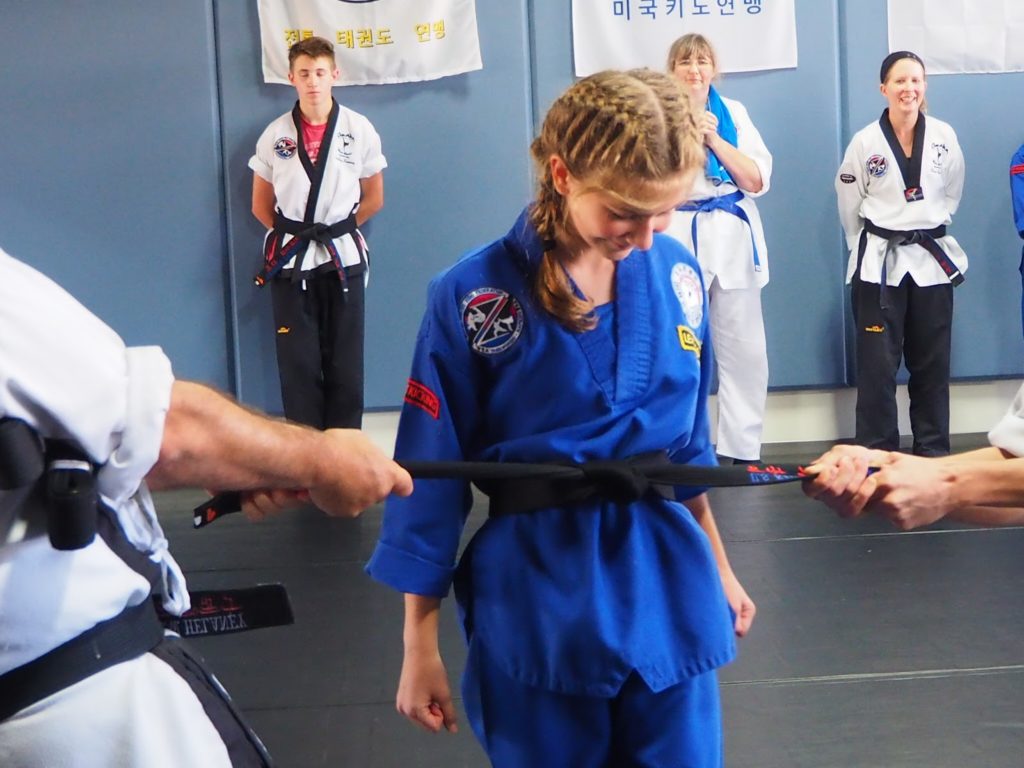OUICK NOTES … In Korean martial arts, such as Taekwondo and Hapkido, the belt ranking system is similar to that of other martial arts styles, but it often has its own unique color scheme and significance. Here is a general overview of what belt levels mean in Korean martial arts:
- White Belt (10th Gup): As in other martial arts, the white belt represents a beginner’s state, symbolizing purity and the willingness to learn the fundamentals of the martial art.
- Colored Belts (9th Gup to 1st Gup): The colored belts in Korean martial arts follow a progressive sequence, typically using colors like yellow, green, blue, and red. Each colored belt represents an intermediate stage of learning, and practitioners at these levels continue to develop their techniques, forms (patterns), and sparring skills.
- Black Belt (1st Dan to 9th Dan): Achieving a black belt in Korean martial arts signifies a significant level of expertise and dedication. Just like in other martial arts, the black belt is not an endpoint but rather the beginning of a new phase of learning and improvement. In Korean martial arts, the black belt degrees are referred to as “Dans.” A practitioner with a higher Dan rank indicates greater proficiency, knowledge, and contribution to the art.
- Higher Dan Ranks (Master and Grandmaster): In Korean martial arts, higher Dan ranks are often associated with titles like “Master” and “Grandmaster.” These titles are typically earned through not only technical skill but also through demonstrating a deep understanding of the art’s philosophy, teaching ability, and contributions to the art’s development.
It’s worth noting that the specific color order and the number of Gup and Dan ranks can vary between different Korean martial arts styles and schools. Additionally, Korean martial arts place a strong emphasis on etiquette, respect, and character development alongside physical techniques. Practitioners are expected to embody the principles of courtesy, integrity, perseverance, self-control, and an indomitable spirit, often collectively referred to as the “Tenets of TaeKwon-Do.”
In ITF TaeKwon-Do, for example, the color sequence often follows: White → Yellow → Green → Blue → Red → Black while in ChungDoKwan TaeKwon-Do the color sequence might be: White → Yellow → Gold→ Orange→Green → Purple →Blue → Red → Brown→ Brown w/ Black Stripe → Black. However, variations might exist, and some schools might have additional colors or specific requirements at each rank.
Overall, the belt ranking system in Korean martial arts serves as a guide for both practitioners and instructors to gauge progress, set goals, and maintain a structured path of advancement. It reflects not only technical proficiency but also personal growth, discipline, and the embodiment of the art’s values.
Do you want to learn more about what TaeKwon-Do can do for you (or your child)? Contact Omaha Blue Waves Martial Arts? Call (402) 215-6003 or write: info@omahabluewaves.com

